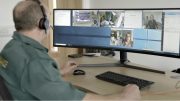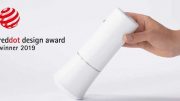When he was a product leader at Google and Motorola, Punit Singh Soni’s teams tackled numerous issues in the mobile sector and even built the first low-cost Android phone. They changed the world. Now as the CEO and founder at Suki, Soni is doing it again as he goes after healthcare using artificial intelligence (AI) to fight physician burnout.
You’ve spoken about putting our doctors and nurses at the center of healthcare technology, where they deserve to be. What does that mean, and why is it important?
Physician burnout is the worst it’s ever been, and a significant contributor to that is the heavy administrative burden put on clinicians. They are using software and technology that isn’t designed for them. The solutions are not intuitively designed, are disruptive to clinician workflows and require numerous clicks and scrolls. It’s far too time-consuming and mentally exhausting. Physicians are leaving medicine at alarming rates. We need to design solutions that work for them and make tasks easier to complete, rather than more difficult.
How is voice-enabled technology key to solving the issue of physician burnout?
Voice is the next generation of user interaction, the next big revolution in user interface since mobile. If physicians can simply speak naturally to complete tedious, time-consuming tasks — such as clinical documentation or finding information from the EHR — it frees up time and mental energy so they can focus on patient care and have more balance in their lives, in turn helping to reduce physician burnout.
One of the physicians we work with in Lynchburg, Va., Dr. Elizabeth Goff, has struggled with work-life balance. She considered going part-time — or quitting medicine entirely. There just wasn’t enough of her to go around as a busy mom and doctor. She’s featured in a recent mini-documentary, “From Burnout to Balance.” Dr. Goff talks about being “so weighed down and didn’t realize it” until the burden was alleviated. Now, she’s back to loving what she does and giving the best of herself to her patients and family. We’re very proud that Suki Assistant enabled Dr. Goff to maintain her practice full-time. That’s an important outcome considering the clinician staffing shortages the industry is reckoning with today.
Health systems are facing tremendous financial pressures. How can they afford to invest in new solutions at a time when they are projected to not make any profit this year and to lose money next year?
Suki can be a meaningful solution that helps health systems tackle their most pressing financial issues. Physicians save significant time on administrative tasks, and as a result, can spend more time on patient care. Our data shows that doctors who use Suki increase their encounter volumes between 20-29%, which translates to approximately $58K – $84K of incremental annual revenue per physician. That is a tremendous benefit in a time when many health systems are expected to lose money.
Another contributor to financial pressures is attrition. Doctors are a critical resource for our collective health, and we must keep as many of them actively practicing medicine as possible. Systems that invest in solutions that make their lives easier, and help prevent physician burnout, will be best positioned to retain and attract more physicians. For healthcare organizations reckoning with the dual, interrelated challenges of retention and negative margins, Suki can help move the needle on both in a significant way.
What’s the difference between ambient and technology-driven solutions?
Today, “ambient” solutions rely heavily on humans in the background transcribing encounters and completing other tasks. As a result, these solutions are relatively expensive (thousands of dollars per user per month), have a significant turnaround time, and the quality varies depending on the person working on the task. In contrast, technology-driven solutions are more affordable, tasks are completed in real-time, and the quality actually improves with use as machine learning models get tuned to each user’s individual preferences.
Since January 2022, Suki has seen a 7X increase in users and an expansion of support to physicians across 30+ specialties. Suki is the only pure technology-based voice assistant for healthcare. The acceleration of our adoption underscores the real need for an affordable tech-based solution.
We’ve entered a new era in AI where it will be very clear which solutions use tech and which still rely on people. We’ll also see an accelerated pace of innovation in which tech-based solutions will tackle challenging problems in increasingly automated ways. We have an exciting product roadmap at Suki that I am excited to share more details about soon.
You’ve said that voice is poised to become the primary user interface for all tech, with voice becoming the “new mobile.” What do you mean by that?
Voice is on the cusp of changing how we interact with all technology. Just as smartphones revolutionized how we communicate and obtain information, voice will do the same for how we work and live. You can already start to see it with consumer voice assistants such as Siri or Alexa. You talk to those assistants, and they help you with tasks like checking the weather or adjusting your thermostat. Eventually, voice will become the main way we interact with all technology from writing emails to researching information to shopping.
Suki has delivered some exciting innovations in the past 12 months, adding multiple features that give clinicians more freedom and flexibility. From “show me” commands that enable providers to easily retrieve patient information — such as medications or allergies — from the EHR to the ability to use their mobile device as a microphone to talk to their computers, Suki’s goal is to make the completion of administrative work as frictionless as possible. That way, clinicians can focus on patient care.
Looking to the future, we understand one of your biggest fears in healthcare is slowness. When you say speed does not mean quality has to suffer, what do you mean by that, and why is it important?
When it comes to technology, healthcare “slowness” can have negative impacts from many vantage points. For instance, quality innovation is key to forward momentum, but the wrong development process can result in products that don’t deliver meaningful value. A thoughtful product development process that includes user feedback will maintain speed without sacrificing quality. When such a process is in place, it is easy to develop valuable features quickly. One key is understanding user workflows, obtaining their feedback on what’s been developed and adjusting accordingly. It may seem obvious, but time and again, companies fail to pressure test their new capabilities in the field and end up in pitfalls.
The slowness of the healthcare buying process is another significant challenge and prolongs adoption of technologies that can transform workflows and care delivery. Healthcare organizations can take months or years to vet and select new solutions providers. This long sales cycle carries risks for healthcare organizations, and it delays efforts to advance innovation.
Organizations sacrifice the gains that a solution could provide when they take an extended amount of time to select a solution. Meanwhile, some solutions providers — especially startups — may not be able to survive these long assessment periods. That puts innovation at risk for the entire industry.
About the author
Punit Singh Soni is the Founder & CEO of Suki and a seasoned product leader who has been part of high-growth teams at Google, Motorola, Flipkart and Cadence Design Systems. He holds an MBA from The Wharton School and an MS in Electrical Engineering from University of Wyoming.





